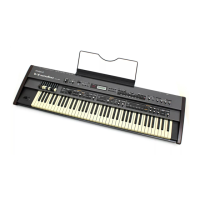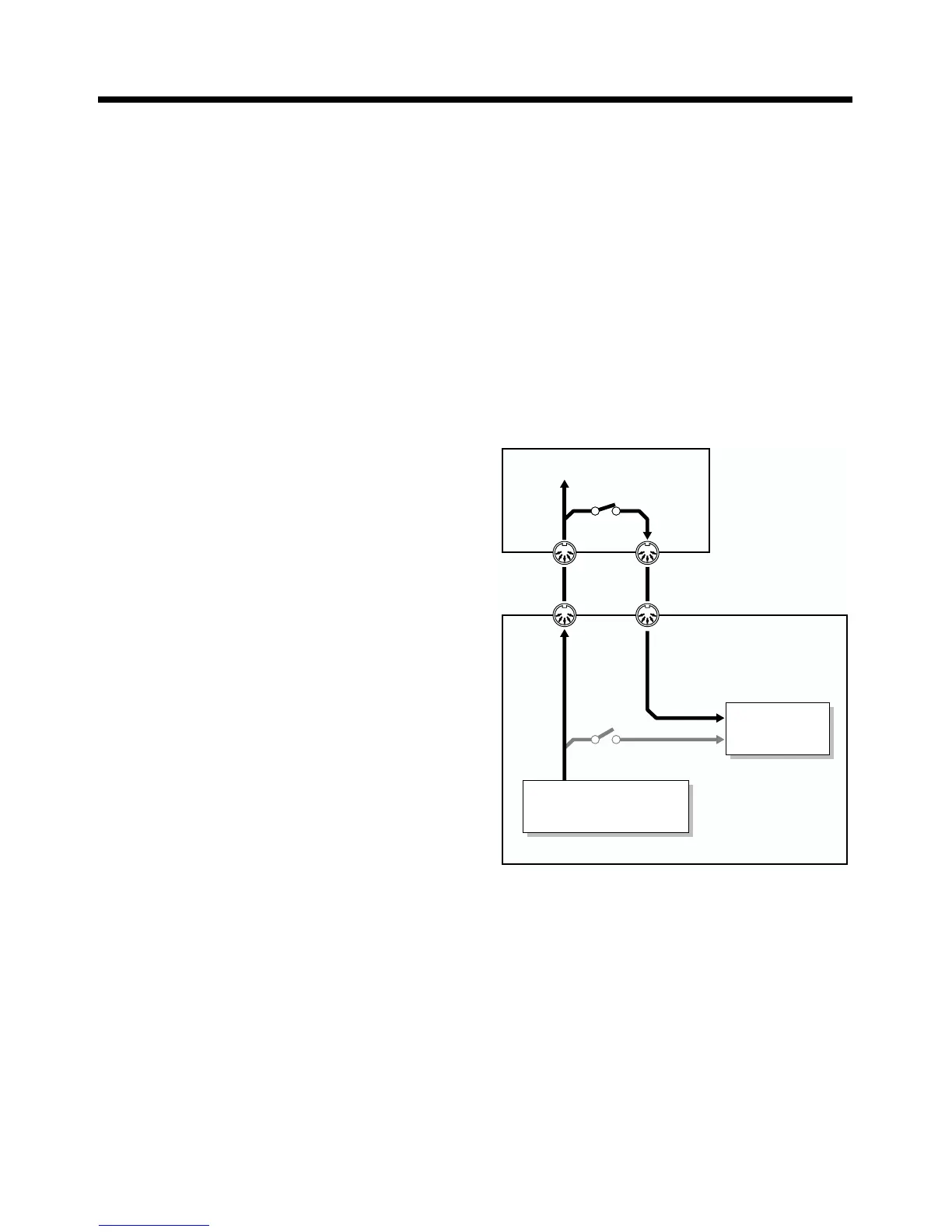80
Connecting External MIDI Devices
■ Recording the Performance
Use the following procedure when recording to an external
sequencer.
1. Turn on the external sequencer’s Thru function.
For details, refer to the following section “About Local
Control.”
Refer to your sequencer owner’s manual for instructions
on how to carry out this procedure.
2. Select the Registration for the performance to be
recorded.
For instructions on selecting the Registration, refer to p.
29.
3. Make the VR-760’s MIDI settings.
Use the procedure described in the previous section
“Settings for Recording” (p. 79) to make the settings.
4. Begin recording with the external sequencer.
5. Bulk Dump the Registration.
Using the Utility Bulk Dump Temporary in Edit mode,
transmit the contents of the selected Registration to the
external sequencer.
For instructions on carrying out this operation, refer to
“Transferring the VR-760’s Settings to an External
MIDI Device (Bulk Dump)” (p. 76)
6. Perform on the VR-760.
7. When the performance is finished, stop recording
with the external sequencer.
You can then listen to the recorded performance by
playing it back on the external sequencer.
■ About the Local Control
The switch that connects and disconnects the MIDI
connection between the keyboard controller section and the
sound generator section (p. 23) is called the Local switch.
Since essential information describing what is being played
on the keyboard won’t reach the sound generator if the Local
switch is set to OFF, the Local switch should normally be left
ON.
However, if while performing you want to send that
performance data to an external sequencer as MIDI messages
to be recorded, you then perform with the externally
connected MIDI sequencer set to MIDI Thru (whereby data
received from MIDI IN is then output from the MIDI OUT
with no changes made to the data) and the VR-760 set to
Local Switch to off.
fig.07-02(Local Switch)
In this case, the data sent over two paths, i.e., the data sent
directly from the keyboard controller section and the data
sent from the keyboard controller section via the external
sequencer, ends up being sent to the sound generator section
simultaneously. Thus, for example, even when you play a
“C” key only once, the note “C” cannot be sounded correctly,
as the sound is played by the sound generator section twice.
MIDI OUT MIDI IN
MIDI IN MIDI OUT
VR-760
Sequencer
Recording
MIDI Thru: On
Local Switch: Off
Keyboard Controller
Section
Sound
Generator
Section

